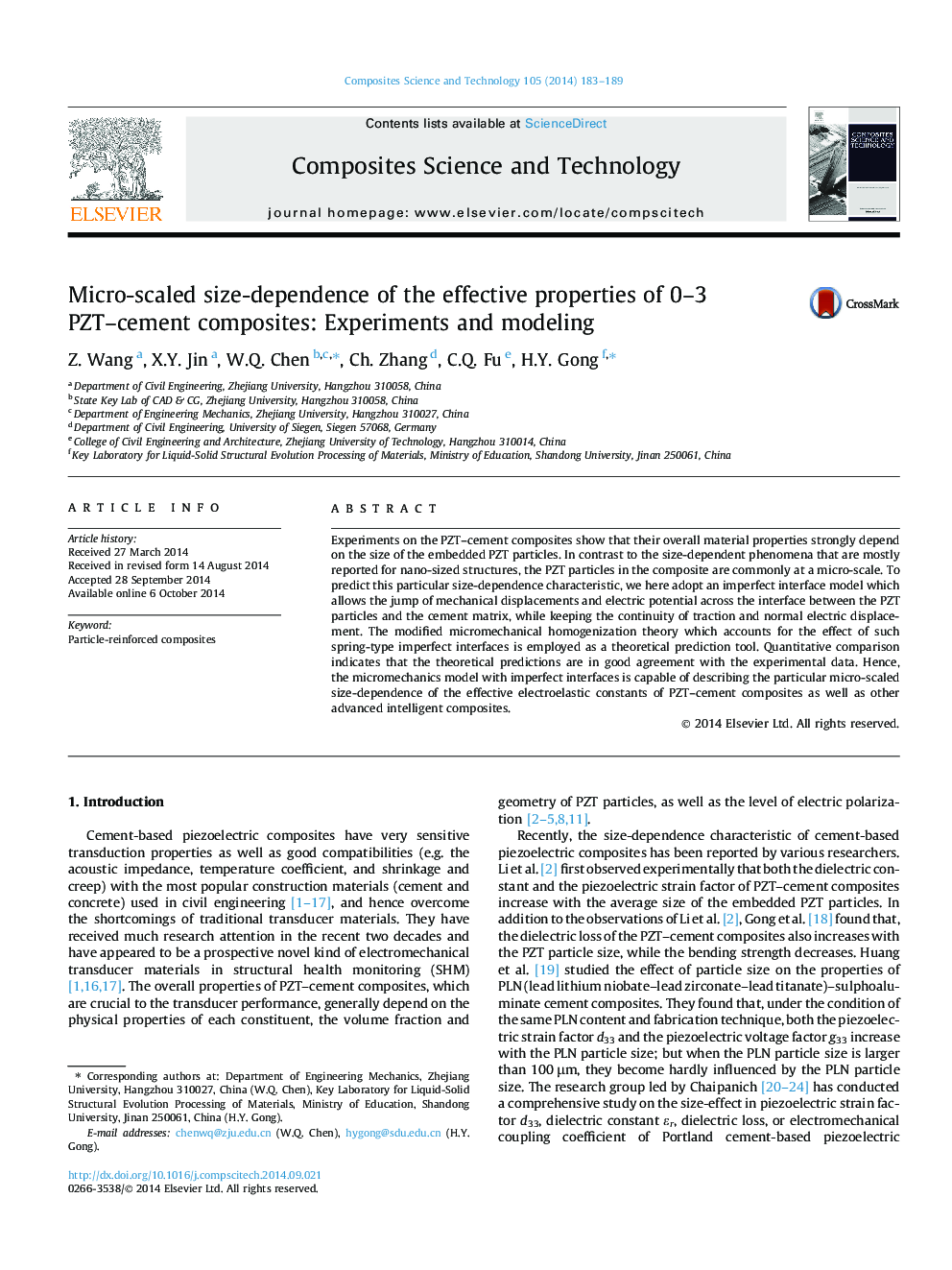| Article ID | Journal | Published Year | Pages | File Type |
|---|---|---|---|---|
| 7215675 | Composites Science and Technology | 2014 | 7 Pages |
Abstract
Experiments on the PZT-cement composites show that their overall material properties strongly depend on the size of the embedded PZT particles. In contrast to the size-dependent phenomena that are mostly reported for nano-sized structures, the PZT particles in the composite are commonly at a micro-scale. To predict this particular size-dependence characteristic, we here adopt an imperfect interface model which allows the jump of mechanical displacements and electric potential across the interface between the PZT particles and the cement matrix, while keeping the continuity of traction and normal electric displacement. The modified micromechanical homogenization theory which accounts for the effect of such spring-type imperfect interfaces is employed as a theoretical prediction tool. Quantitative comparison indicates that the theoretical predictions are in good agreement with the experimental data. Hence, the micromechanics model with imperfect interfaces is capable of describing the particular micro-scaled size-dependence of the effective electroelastic constants of PZT-cement composites as well as other advanced intelligent composites.
Related Topics
Physical Sciences and Engineering
Engineering
Engineering (General)
Authors
Z. Wang, X.Y. Jin, W.Q. Chen, Ch. Zhang, C.Q. Fu, H.Y. Gong,
